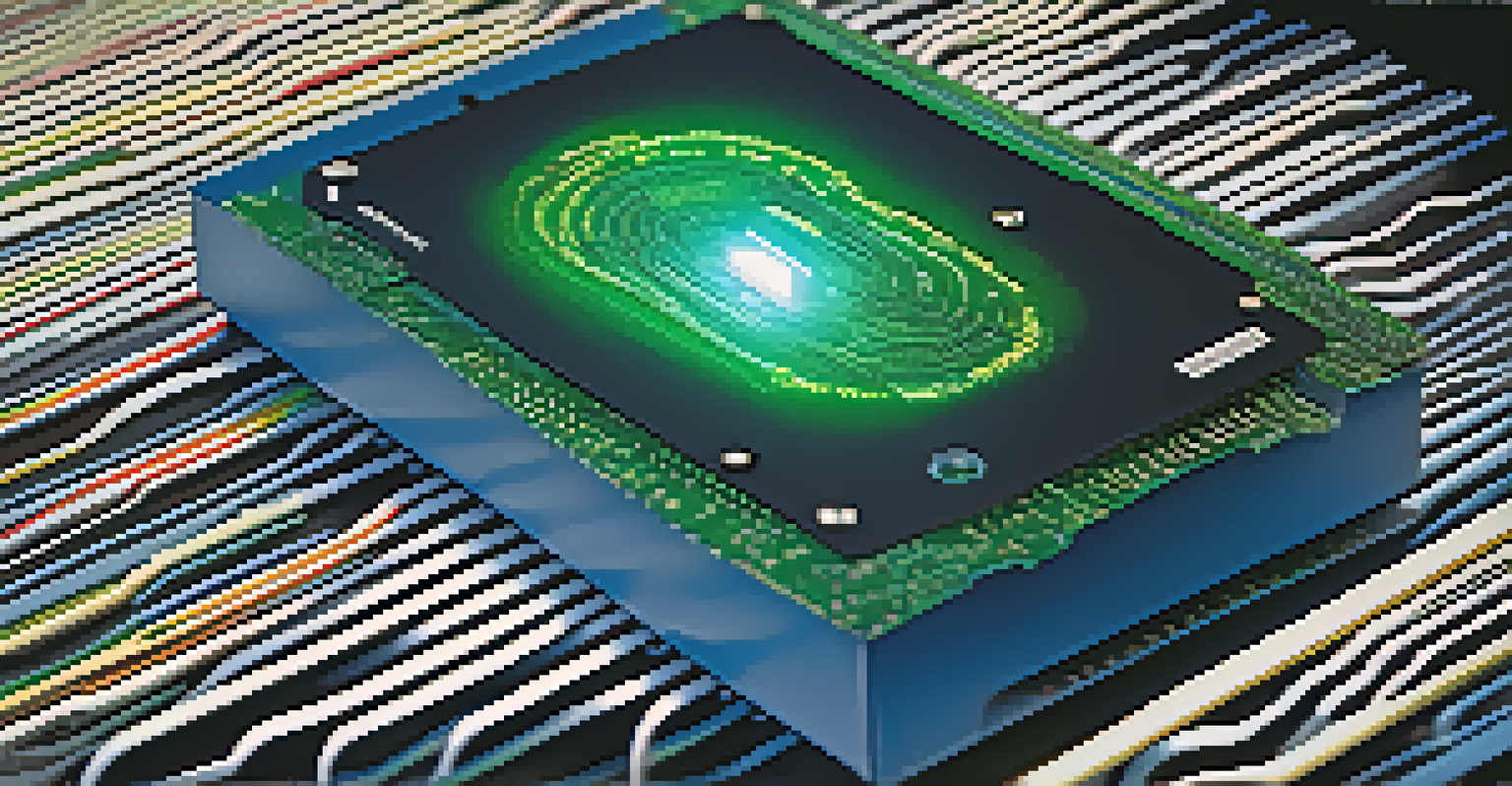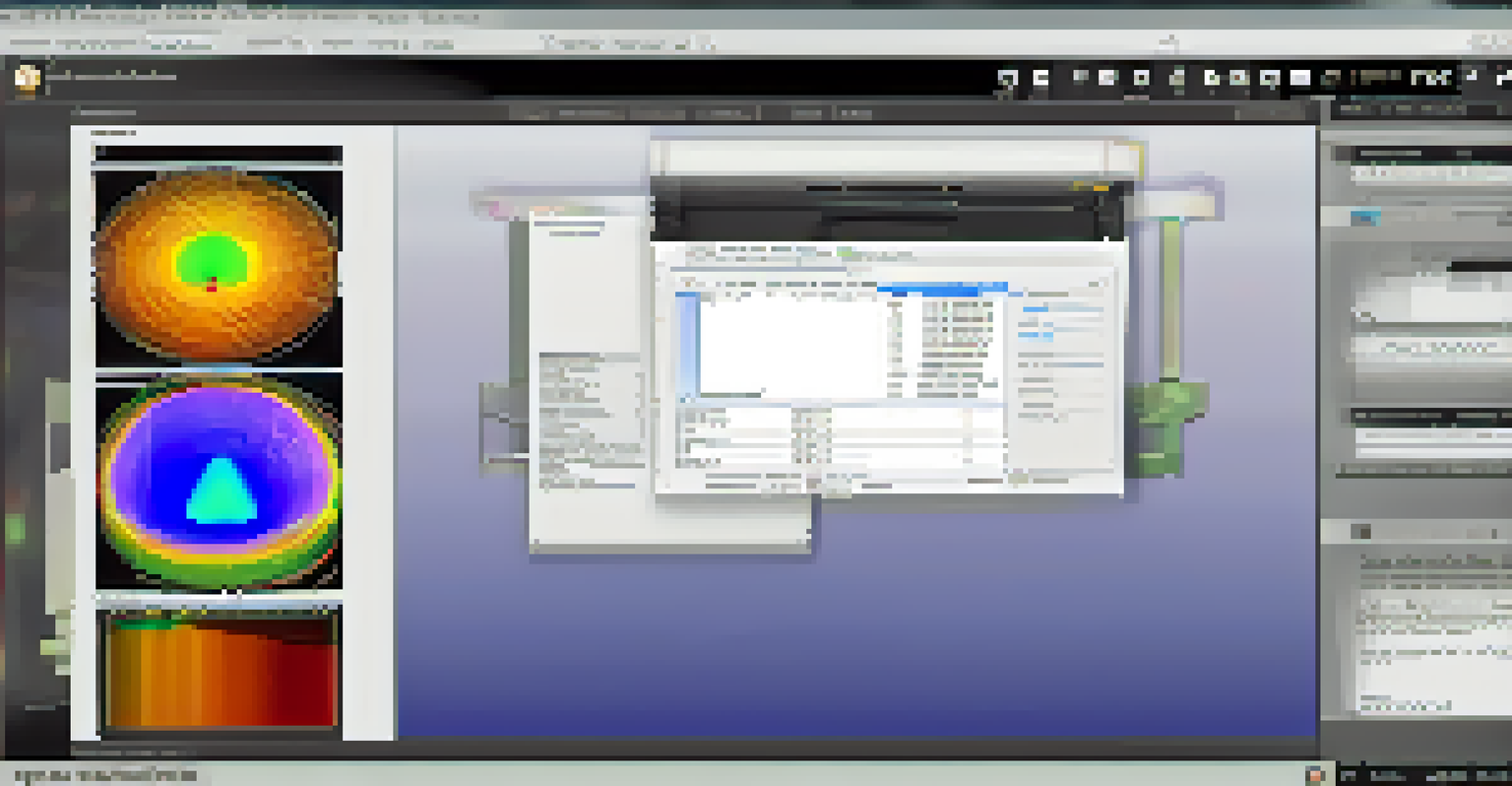Forensic Imaging: Creating Exact Copies of Digital Evidence

Understanding Forensic Imaging and Its Importance
Forensic imaging is the process of creating exact, bit-for-bit copies of digital evidence, such as hard drives or memory cards. This technique is crucial in investigations, as it ensures that the original data remains untouched and can be analyzed without altering any of its contents. By preserving the integrity of the original evidence, forensic imaging provides a reliable foundation for legal proceedings and analysis.
Digital forensics is a process of identifying, preserving, analyzing, and presenting digital evidence in a way that is legally acceptable.
The importance of forensic imaging cannot be overstated; it serves as a safeguard against data tampering and loss. In today’s digital world, where information can easily be altered or deleted, having a precise duplicate helps law enforcement and legal teams maintain the authenticity of evidence. Additionally, creating copies allows multiple experts to analyze the same data simultaneously without risking the original evidence.
In essence, forensic imaging acts as a digital safety net, ensuring that critical information remains accessible and unspoiled. This practice not only supports investigations but also reassures all parties involved that the evidence presented in court is credible and reliable.
The Process of Forensic Imaging Explained
The forensic imaging process typically begins with the selection of appropriate tools and software designed for data duplication. Specialized forensic imaging tools, such as write blockers, are essential as they prevent any modifications to the original data during the imaging process. This is similar to using a protective case for a valuable item—ensuring it remains intact while being copied.

Once the proper tools are in place, the technician connects the storage device to the imaging software, which creates a duplicate of the data. This process can involve creating a complete image of the drive, including all files, partitions, and even unallocated space, which may contain residual data. The result is a comprehensive snapshot of the device at a specific point in time.
Forensic Imaging Preserves Evidence
This process creates exact copies of digital evidence, ensuring the original data remains unaltered for reliable legal analysis.
After the imaging is completed, checksums or hash values are generated for both the original and copied data. These cryptographic checksums ensure that the images are identical and provide a way to verify the integrity of the evidence throughout the investigation and eventual legal proceedings.
Different Types of Forensic Imaging Techniques
Forensic imaging techniques can vary based on the type of device and the nature of the investigation. Some common methods include logical imaging, which captures specific files or folders, and physical imaging, which duplicates the entire storage device. Each method serves distinct purposes, so the choice depends on the specific needs of the case.
The true value of digital evidence lies in its ability to be thoroughly analyzed and presented with clarity and integrity.
Another technique is live imaging, where data is captured from a running system, allowing investigators to retrieve volatile information like RAM contents. This method can be crucial in cases involving active cyber threats or malware, as it preserves data that would otherwise be lost once the system is powered down.
Additionally, there are specialized imaging methods for mobile devices and cloud storage, acknowledging the diverse landscape of digital evidence. These various techniques ensure that forensic experts can adapt their approach based on the device type and the requirements of the investigation.
Key Tools Used in Forensic Imaging
A variety of tools are available for forensic imaging, each designed to cater to different aspects of the process. Popular software options include EnCase and FTK Imager, which offer robust imaging capabilities along with data analysis features. These tools help investigators not only create images but also sift through the data more effectively.
Hardware tools, such as write blockers, are equally important, as they protect original evidence from accidental modification. By preventing any write access to the storage device, these tools ensure that the integrity of the evidence is maintained throughout the imaging process.
Diverse Techniques for Imaging
Different methods like logical, physical, and live imaging are employed based on the type of device and investigation needs.
Moreover, forensic investigators often use specialized cables and connectors to handle various types of storage devices, ensuring compatibility and ease of access. The combination of software and hardware tools makes the imaging process efficient and reliable, reinforcing the importance of using the right equipment in forensic investigations.
Challenges in Forensic Imaging
While forensic imaging is a vital aspect of digital investigations, it is not without its challenges. One major hurdle is dealing with encrypted data, which can complicate the imaging process. Investigators may need to obtain the decryption keys or find alternative methods to access and image the data without compromising its integrity.
Another challenge arises from the sheer volume of data that needs to be processed. Modern devices can hold terabytes of information, making it time-consuming and resource-intensive to create complete images. Investigators must balance thoroughness with efficiency to ensure timely results, especially in urgent cases.
Additionally, the evolving nature of technology means that forensic imaging techniques must continuously adapt to keep pace. New file systems, storage formats, and devices emerge regularly, requiring ongoing education and updates to forensic methodologies to ensure that investigations remain effective and reliable.
Legal Considerations in Forensic Imaging
Forensic imaging operates within a legal framework that investigators must adhere to in order to ensure the admissibility of evidence in court. This includes following strict protocols for the collection and handling of digital evidence, as any misstep can lead to challenges regarding the evidence's validity. Understanding these legal requirements is crucial for forensic experts to effectively support law enforcement and legal teams.
Chain of custody is another critical aspect of legal considerations in forensic imaging. It documents the handling of evidence from the moment it is collected until it is presented in court. Maintaining an unbroken chain of custody helps establish the authenticity of the evidence and provides a clear timeline of its handling, which is essential for legal proceedings.
Legal Protocols Ensure Admissibility
Adhering to strict legal standards and maintaining chain of custody are crucial for the validity of digitally imaged evidence in court.
In summary, forensic imaging is not just about the technical process; it also involves a thorough understanding of legal protocols and best practices. By combining technical expertise with legal knowledge, forensic experts can ensure that the evidence they present is not only accurate but also admissible in a court of law.
Future Trends in Forensic Imaging
As technology continues to evolve, so too does the field of forensic imaging. Emerging technologies like artificial intelligence (AI) and machine learning are beginning to play a role in automating aspects of digital evidence analysis, which could streamline the imaging process. This could potentially allow investigators to focus more on interpreting data rather than spending significant time on the imaging itself.
Another trend is the increased focus on cloud data forensic imaging. With more individuals and organizations storing information in the cloud, understanding how to extract and analyze cloud-based evidence is becoming essential. This shift necessitates the development of new tools and techniques tailored specifically for cloud environments.

In conclusion, as digital forensics evolves, so will the practices surrounding forensic imaging. Staying informed about technological advances and adapting to new challenges will ensure that forensic experts remain equipped to handle the complexities of modern digital investigations.